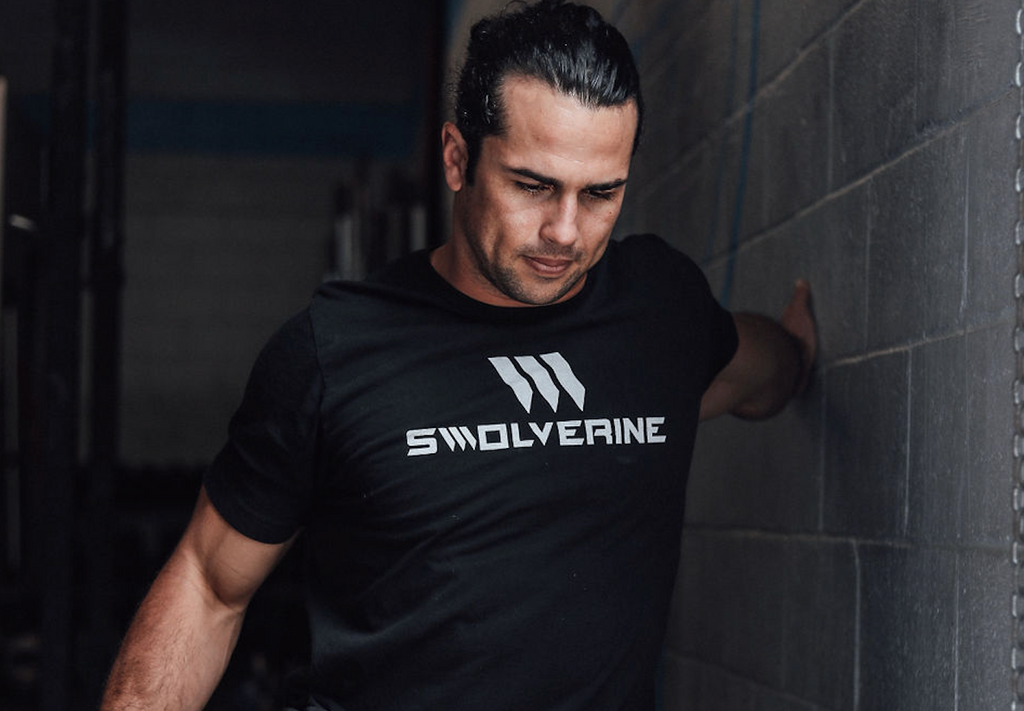
If you’re serious about performance, recovery, or muscle growth, peptides have likely entered your radar. These short chains of amino acids can signal powerful physiological effects — from stimulating growth hormone release to accelerating soft tissue repair. Whether you’re a bodybuilder, athlete, or recovering from injury, peptides offer targeted, fast-acting support that traditional supplements can’t match.
In this guide, we’ll break down the 10 most effective peptides for recovery, growth, and performance — covering how they work, when to use them, and what makes each one unique.
Before we dive in, it’s important to note:
-
Most peptides are classified as research chemicals and not FDA-approved for human use.
-
Drug-tested athletes should proceed with caution — many peptides are banned by WADA and USADA.
-
Always work with a medical professional when exploring peptide-based protocols.
Let’s explore the best peptides on the market — from injury recovery champions like BPC‑157 to growth titans like IGF‑1 LR3.
What Are Peptides?
Peptides are short chains of amino acids — typically between 2 and 50 — that function as biological messengers in the body. They’re smaller than proteins but highly specific in their function, often signaling cells to trigger growth, repair, hormone release, or immune responses.
In performance and medical contexts, synthetic peptides are designed to mimic naturally occurring compounds, allowing users to target specific outcomes such as:
-
Accelerated muscle or tendon repair
-
Increased growth hormone production
-
Enhanced fat metabolism
-
Improved sleep and recovery
-
Strengthened immune function
Peptides are typically administered via subcutaneous or intramuscular injection, though some like MK‑677 can be taken orally. Each peptide has a unique mechanism of action, half-life, and tissue target, which is why stacking multiple peptides can yield synergistic results.
How Do Peptides Work in the Body?
Peptides work by binding to specific receptors on the surface of cells, activating precise physiological pathways. These pathways may regulate:
-
Growth hormone release (e.g., CJC‑1295, Ipamorelin)
-
Tissue healing and regeneration (e.g., BPC‑157, TB‑500)
-
Muscle hypertrophy and nutrient delivery (e.g., IGF‑1 LR3, PEG‑MGF)
-
Immune system modulation (e.g., Thymosin Alpha‑1)
For example:
-
BPC‑157 signals fibroblast migration and angiogenesis, accelerating tendon and ligament healing.
-
CJC‑1295 binds to pituitary GHRH receptors to stimulate natural GH pulses.
-
IGF‑1 LR3 binds directly to muscle IGF-1 receptors, triggering protein synthesis and new muscle fiber growth.
The specificity of each peptide allows for targeted intervention — unlike traditional drugs or hormones, which often create broad, systemic effects and unwanted side effects.
By working with the body’s natural signaling systems, peptides allow athletes, bodybuilders, and aging populations to:
-
Recover faster
-
Train harder
-
Extend longevity
-
Improve quality of life
1. BPC‑157 – The Injury Recovery Powerhouse
If there’s one peptide every athlete and bodybuilder should know about, it’s BPC‑157. Originally derived from a protective compound found in human gastric juice, BPC‑157 supports tendon, ligament, muscle, and even gut repair — making it one of the most versatile recovery tools available.
Why It Works
BPC‑157 enhances:
-
Collagen production and fibroblast migration
-
Tendon and ligament healing
-
Blood vessel regeneration (angiogenesis)
-
Gastrointestinal tract integrity
-
Inflammation modulation in injured tissue
“BPC‑157 has shown effectiveness in muscle healing, nerve regeneration, and even reversal of gastric ulcers in preclinical models.”
— Sikiric et al., Current Pharmaceutical Design
Use Cases
-
Soft tissue injuries (tendonitis, ligament sprains, rotator cuff damage)
-
Post-surgical repair
-
Intestinal permeability or gut inflammation (leaky gut)
-
Stacked with TB‑500 for full-body recovery
BPC‑157 works locally and rapidly, which makes it ideal for targeted healing. Most users report benefits within 7–10 days of use.
Explore the complete recovery protocol:
BPC‑157 Cycle Guide for Joint and Muscle Repair
2. TB‑500 – Full-Body Tissue Repair
While BPC‑157 targets local injuries, TB‑500 offers systemic healing support. It’s a synthetic version of thymosin beta‑4 — a naturally occurring peptide involved in tissue regeneration, cell migration, and blood vessel formation.
Why It Works
TB‑500 promotes:
-
Actin regulation, helping cells move to injury sites
-
Angiogenesis, improving blood flow and oxygen delivery
-
Anti-inflammatory effects, reducing swelling and stiffness
-
Scar tissue reduction, improving tissue elasticity and function
“TB‑500 stimulates the mobilization of regenerative cells and enhances healing of muscle, skin, tendon, and ligaments.”
— Goldstein et al., Journal of Cellular Biochemistry
Use Cases
-
Multi-site soft tissue recovery
-
Post-surgical healing
-
Chronic inflammation
-
Injury prevention in high-frequency training
-
Often stacked with BPC‑157 for synergistic recovery
Unlike BPC‑157, TB‑500 is injected subcutaneously or intramuscularly, and spreads systemically to promote healing across the body.
Full breakdown of how it works:
The Incredible Benefits of TB‑500
3. MK‑677 (Ibutamoren) – GH Release and Muscle Preservation
MK‑677, also known as Ibutamoren, is one of the most popular peptides for increasing growth hormone (GH) and IGF‑1 levels without injections. Unlike traditional GH therapies, MK‑677 is orally active and works by stimulating the ghrelin receptor to naturally boost GH secretion.
Why It Works
MK‑677 enhances:
-
Natural GH and IGF‑1 release
-
Muscle preservation during cuts or injury
-
Deep sleep quality and recovery
-
Fat metabolism and nutrient partitioning
-
Appetite (a bonus or drawback, depending on your goals)
“MK‑677 produces sustained increases in GH and IGF‑1 without suppressing natural testosterone or cortisol.”
— Smith et al., The Journal of Clinical Endocrinology & Metabolism
Use Cases
-
Preserving muscle during a cutting cycle or injury
-
Enhancing recovery and performance in older athletes
-
Long-term GH support without injections
-
Stacked with HGH or TB‑500
MK‑677 is typically run in cycles of 8–16 weeks and is popular among those seeking anabolic effects without traditional steroids.
For full cycle guidance, see:
MK‑677 (Ibutamoren) Cycle Guide
4. CJC‑1295 – Extended GH Release
CJC‑1295 is a long-acting GHRH analog (Growth Hormone-Releasing Hormone) designed to stimulate your pituitary gland to release more natural growth hormone (GH). Unlike short-acting secretagogues, CJC‑1295 (especially the DAC version) provides a sustained GH pulse — often lasting up to a week from a single injection.
Why It Works
CJC‑1295 enhances:
-
Endogenous GH secretion
-
Sleep quality and REM cycles
-
Muscle recovery and cellular repair
-
Fat oxidation and lean tissue preservation
“CJC‑1295 increases GH and IGF‑1 levels significantly over time, with a prolonged half-life allowing less frequent dosing.”
— Teichman et al., The Journal of Clinical Endocrinology & Metabolism
Use Cases
-
Growth hormone support without synthetic HGH
-
Recovery enhancement during high-volume training
-
Long-term anti-aging or physique optimization
-
Often stacked with Ipamorelin for synergistic GH pulses
CJC‑1295 is typically injected 1–2 times per week, making it a convenient alternative to daily peptides like Sermorelin.
Learn more in the full breakdown:
CJC‑1295 + Ipamorelin Guide
5. Ipamorelin – Clean GH Pulse Without Cortisol Spike
Ipamorelin is a selective GH secretagogue that stimulates the release of growth hormone without triggering spikes in cortisol, prolactin, or aldosterone — making it one of the cleanest and safest peptides for boosting recovery and lean muscle growth.
Why It Works
Ipamorelin mimics the hunger hormone ghrelin, activating the pituitary gland to release GH in short bursts. This leads to:
-
Improved muscle recovery and fat burning
-
Enhanced sleep and cellular repair
-
Minimal side effects or endocrine disruption
-
Safe daily dosing for long-term protocols
“Ipamorelin selectively triggers GH release without increasing ACTH or cortisol, making it safer than other secretagogues.”
— Raun et al., European Journal of Endocrinology
Use Cases
-
Daily GH support with low side effect risk
-
Stacked with CJC‑1295 for dual-phase GH release
-
Used during cutting, recovery, or anti-aging protocols
-
Preferred by those seeking mild but consistent growth and fat loss results
Ipamorelin is often dosed once or twice daily, with noticeable improvements in sleep, muscle retention, and inflammation reduction over several weeks.
Learn more here:
Ipamorelin Guide
6. HGH (Human Growth Hormone) – Gold Standard Recovery Peptide
Human Growth Hormone (HGH) is the most well-known peptide in the performance and recovery space — and for good reason. As the direct form of the hormone your body naturally produces, HGH plays a central role in tissue repair, muscle growth, fat metabolism, and overall regeneration.
Why It Works
HGH stimulates:
-
IGF‑1 production, driving hypertrophy and repair
-
Protein synthesis and nitrogen retention
-
Faster recovery from injury or training stress
-
Improved sleep, skin health, and joint function
-
Fat loss via lipolysis and better glucose utilization
“HGH improves lean body mass, aerobic capacity, and tissue repair in both clinical and athletic settings.”
— Liu et al., Annals of Internal Medicine
Use Cases
-
Competitive athletes recovering from intense training or surgery
-
Anti-aging and physique optimization for older users
-
Stacked with IGF‑1 LR3 for synergistic anabolic effect
-
Used cautiously due to legal, cost, and side effect considerations
HGH is typically administered daily via SubQ injection, and results often compound over several months of use. Its impact is profound — but so is its regulation.
Read the full article:
HGH Benefits, Uses, Side Effects
7. Sermorelin – Natural GH Stimulation
Sermorelin is a short-acting peptide that mimics GHRH (Growth Hormone-Releasing Hormone) to stimulate your body’s natural growth hormone production. Unlike synthetic HGH, Sermorelin encourages a more physiologic GH pulse and is often favored in hormone replacement therapy (HRT) and anti-aging protocols.
Why It Works
Sermorelin activates the pituitary gland to release GH in response to its own rhythms, supporting:
-
Improved sleep and tissue repair
-
Increased fat oxidation and muscle tone
-
Reduced inflammation and recovery time
-
Long-term endocrine balance
“Sermorelin offers a safer alternative to HGH by enhancing endogenous hormone release, which reduces the risk of GH suppression or overdose.”
— Walker et al., Endocrine Reviews
Use Cases
-
GH support for aging athletes or general wellness
-
Safer long-term option compared to HGH
-
Daily SubQ injections, typically before bedtime
-
Often paired with Ipamorelin for enhanced nightly GH pulses
Sermorelin may be a preferred option for users seeking gradual, sustainable improvements without the risks or legal complications of exogenous HGH.
Learn more here:
Sermorelin Benefits and Usage Guide
8. PEG-MGF – Local Muscle Repair and Satellite Cell Activation
PEG-MGF (Pegylated Mechano Growth Factor) is a modified version of IGF-1 that is released in response to muscle damage. Known for its role in muscle hypertrophy and regeneration, PEG-MGF is particularly effective at activating satellite cells — the precursors to new muscle fibers.
Why It Works
PEG-MGF enhances:
-
Muscle cell differentiation and repair
-
Satellite cell activation post-training
-
Localized hypertrophy when injected intramuscularly
-
Delayed muscle soreness reduction (DOMS)
The pegylation process increases its half-life, allowing for longer-lasting effects in the bloodstream compared to unmodified MGF.
“PEG-MGF triggers satellite cell activation, playing a key role in muscle regeneration and repair following intense training.”
— Goldspink et al., Experimental Physiology
Use Cases
-
Bodybuilders in bulking or recomposition phases
-
Injury recovery involving muscle atrophy
-
Intramuscular injections directly into trained muscles
-
Short-term cycles for post-training repair
PEG-MGF is typically used post-workout, either alone or as part of an anabolic peptide stack with IGF‑1 LR3 and HGH.
Full breakdown here:
PEG-MGF Muscle Growth & Recovery Guide
9. IGF‑1 LR3 – Potent Anabolic Growth Factor
IGF‑1 LR3 is one of the most powerful peptides for muscle growth, nutrient partitioning, and recovery. As a long-acting version of insulin-like growth factor-1 (IGF‑1), LR3 binds directly to IGF-1 receptors in muscle tissue, stimulating anabolism at the cellular level.
Why It Works
IGF‑1 LR3 supports:
-
Satellite cell proliferation, leading to new muscle fiber formation
-
Glucose uptake and nutrient shuttling into muscle cells
-
Fat loss, especially when stacked with HGH
-
Muscle preservation during calorie deficits or injury recovery
“IGF‑1 LR3 demonstrates superior tissue activity due to its extended half-life and increased receptor affinity, supporting rapid muscle regeneration and hypertrophy.”
— Daughaday et al., The Journal of Clinical Investigation
Use Cases
-
Advanced bodybuilders in growth or recomp cycles
-
Post-injury muscle restoration
-
Stacked with PEG‑MGF, MK‑677, or anabolic steroids
-
Site-specific injections in lagging muscle groups (with caution)
LR3 has a half-life of ~20–30 hours, making it ideal for once-daily or every-other-day injections. Due to its potency, cycling and proper titration are essential.
Learn more in our full guide:
Unlocking the Power of IGF‑1 LR3
10. Thymosin Alpha‑1 – Immune Recovery and Resilience
Thymosin Alpha‑1 (Tα1) is a therapeutic peptide best known for its role in immune modulation and systemic recovery. While not anabolic in nature, it plays a crucial role in resilience, particularly during periods of high stress, illness, or overtraining — making it a valuable support compound in any recovery stack.
Why It Works
Thymosin Alpha‑1 supports:
-
T-cell function and immune activation
-
Reduction of systemic inflammation
-
Enhanced resilience after illness or intense training
-
Improved response to infections and cellular stress
“Thymosin Alpha‑1 enhances immune cell function and demonstrates potent immunomodulatory effects in both clinical and performance settings.”
— King et al., Frontiers in Immunology
Use Cases
-
Athletes recovering from illness or suppressed immunity
-
Post-cycle therapy (PCT) or post-injury support
-
Autoimmune modulation and gut integrity
-
Stacked with BPC‑157, MK‑677, or HGH for systemic wellness
While it doesn’t directly build muscle, Tα1 can help you recover faster, train harder, and maintain wellness — especially during intense cycles or high-stress periods.
Learn more in the full guide:
Thymosin Alpha‑1: Your Ultimate Guide to Immune Health and This Peptide
Are Peptides Legal and Safe?
Peptides have become increasingly popular in performance enhancement and recovery, but their legal status and safety profiles remain complex. Most of the compounds listed in this article fall into the category of research-use-only substances, and are not approved by the FDA for human consumption or medical treatment.
Legal Classification
-
FDA Status: Nearly all performance and recovery peptides (e.g., BPC-157, TB-500, MK-677, IGF-1 LR3) are not FDA-approved for therapeutic use. They are typically labeled and sold as research chemicals.
-
Prescription Requirements: Some peptides, such as Sermorelin or HGH, may be available through licensed compounding pharmacies with a prescription from a qualified healthcare provider.
-
Import Regulations: Peptide importation without proper documentation may violate customs laws in some countries.
Athletic Bans and Drug Testing
Peptides that enhance healing, growth hormone release, or recovery are prohibited by major anti-doping organizations, including:
-
WADA (World Anti-Doping Agency)
-
USADA (United States Anti-Doping Agency)
-
NCAA and most international federations
Prohibited peptides include:
-
Growth hormone secretagogues (MK-677, CJC-1295, Ipamorelin)
-
Growth factors (IGF-1 LR3, PEG-MGF)
-
Tissue-healing peptides (BPC-157, TB-500, Thymosin Alpha-1)
Drug-tested athletes should avoid these compounds entirely, as even trace exposure could lead to failed tests and disqualification.
Safety and Sourcing Risks
| Risk Category | Considerations |
|---|---|
| Side Effects | May include headaches, water retention, blood pressure changes, or fatigue |
| Long-Term Unknowns | Some peptides affect cell proliferation and angiogenesis; long-term risks are unstudied |
| Product Purity | Many peptides sold online lack third-party testing or may be counterfeit |
| Medical Oversight | Proper dosing and safety require support from a knowledgeable practitioner |
For those seeking safe and legal recovery support, natural alternatives like collagen, omega-3s, DHEA, and other anti-inflammatory compounds may offer meaningful benefits without the risks associated with unregulated peptides.
Conclusion: Which Peptide Stack Is Right for You?
Peptides offer a strategic and highly targeted approach to muscle growth, injury recovery, hormonal balance, and performance enhancement. Whether you’re recovering from surgery, managing chronic joint pain, or optimizing body composition, the right peptide can help you get there faster — with fewer side effects than traditional anabolic agents.
Match Your Goals to the Right Peptides:
If you’re new to peptides, start with a clear outcome in mind and always evaluate:
For those not ready for research-grade peptides, Swolverine offers natural recovery stacks including collagen, glutamine, DHEA, and joint support formulas that can serve as effective, legal alternatives.





